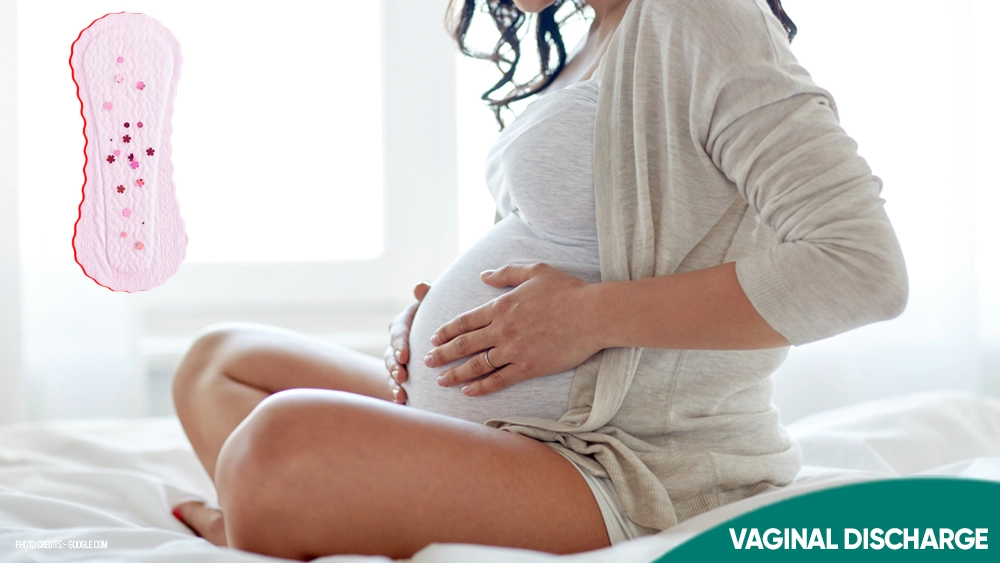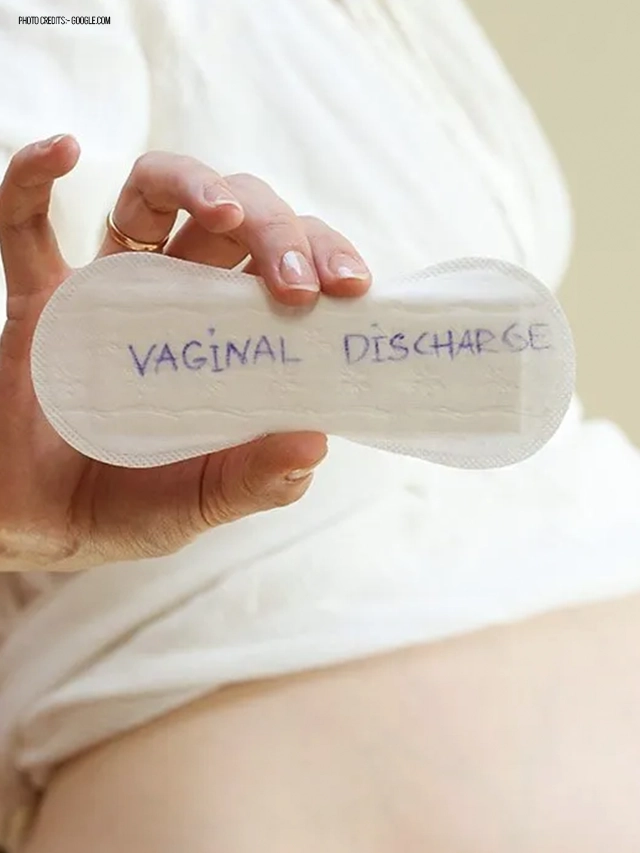
HEALTH BLOG
How Much Discharge is Normal During Pregnancy
-
Rahul Priydarss
During pregnancy, vaginal discharge, known as leukorrhea, naturally increases due to hormonal changes. How much discharge is normal during pregnancy? Typically, it is clear or milky white, odorless, and helps maintain vaginal health by preventing infections. This comprehensive guide explains what is considered normal discharge, how it changes through each trimester, and when to seek medical advice. Learn how to manage discharge with simple hygiene practices and understand the signs of abnormal discharge that may indicate infection or complications. Stay informed and ensure a healthy pregnancy by recognizing the key details.
Introduction to How Much Discharge is Normal During Pregnancy:
It is normal to experience an increase in vaginal discharge during pregnancy, with the amount varying for each woman. This discharge, known as leukorrhea, is typically clear or milky white, and odorless or slightly mild in scent. It plays an essential role in maintaining the health of your vagina and protecting your baby from infections. But understanding how much discharge is normal and knowing when to seek help can be crucial for a healthy pregnancy.
Pregnancy brings about many changes, some of which can feel overwhelming, especially for first-time mothers. Among these changes is the increased vaginal discharge, which can be disconcerting if you’re unsure about what’s typical. In this detailed guide, we’ll explain everything you need to know about vaginal discharge during pregnancy, including what’s normal, what causes the increase, how to manage it, and when it might be a cause for concern.
What is Normal Pregnancy Discharge:
Normal pregnancy discharge, also referred to as leukorrhea, is thin, clear, or milky white and generally odorless or has a mild, non-offensive smell. This type of discharge is completely normal and serves several essential functions during pregnancy. It helps to cleanse the vagina and protect the reproductive tract from harmful bacteria, thus acting as a barrier that can prevent infections from traveling up into the uterus.
During the early stages of pregnancy, the amount of discharge may be similar to what you experience before pregnancy. However, as the pregnancy progresses, the amount of discharge may noticeably increase. This is particularly true in the second and third trimesters, as your body produces more estrogen, and there is increased blood flow to the pelvic region. The discharge serves to keep the vagina moist and free of infections, protecting both you and your baby.
You might notice that the discharge tends to increase gradually as you move further along in your pregnancy. This discharge can also become more apparent closer to the due date when your body is preparing for labor. While this might feel uncomfortable or even bothersome, it’s generally not something to worry about unless there are notable changes in color, consistency, or smell.

Table of Contents
What Causes an Increase in Vaginal Discharge During Pregnancy:
The most significant factor behind the increase in vaginal discharge during pregnancy is the rise in hormone levels, particularly estrogen. Estrogen plays a vital role in maintaining pregnancy by supporting the growth of blood vessels in the uterus and ensuring that the placenta functions properly. It also increases the activity of the mucous membranes, leading to more discharge than usual.
The rise in blood flow to the pelvic region is another contributing factor. Increased circulation in this area stimulates the production of cervical and vaginal secretions, which is why the discharge can sometimes feel more abundant than before. This is your body’s natural way of protecting your reproductive organs and creating a healthy environment for your growing baby.
As your pregnancy advances, the cervix softens in preparation for labor. This can also lead to more discharge, which helps form the mucus plug—a thick collection of mucus that seals the cervix and prevents bacteria from entering the uterus. The mucus plug eventually comes out closer to labor, but the gradual increase in discharge leading up to this point is completely normal and expected.
When Should You Be Concerned About Discharge:
While vaginal discharge is a natural part of pregnancy, there are a few signs that indicate the discharge might not be normal. It’s important to monitor any changes in the color, consistency, and smell of your discharge, as these can indicate underlying health issues. If you notice any of the following changes, it’s recommended to seek medical attention:
- Changes in Color: Normal discharge during pregnancy is clear or milky white. If your discharge becomes yellow, green, or gray, it could signal an infection. Greenish or yellowish discharge is often associated with sexually transmitted infections (STIs), while gray discharge may be a sign of bacterial vaginosis, a bacterial infection in the vagina.
- Foul Odor: A mild odor is typical for pregnancy discharge, but if the smell becomes strong, fishy, or unpleasant, this could be a sign of an infection, such as bacterial vaginosis. A strong odor accompanied by a change in color could also indicate a more serious infection that needs medical intervention.
- Thick or Clumpy Texture: If the discharge becomes very thick and clumpy—resembling cottage cheese—it may indicate a yeast infection, which is common during pregnancy due to hormonal changes. Yeast infections can cause discomfort, itching, and irritation, but they are generally treatable with antifungal medications prescribed by your doctor.
- Blood-Streaked or Bloody Discharge: Although some light spotting or pinkish discharge can be normal early in pregnancy, any discharge that is heavily blood-streaked, brownish, or accompanied by cramping could be a sign of more serious conditions like a miscarriage, placenta previa, or preterm labor. It’s crucial to contact your healthcare provider if you notice bleeding at any stage of pregnancy.
- Sudden Watery Discharge: A sudden increase in watery discharge, especially in the later stages of pregnancy, could be a sign that your water has broken, signaling the start of labor. If you’re unsure whether the fluid is discharge or amniotic fluid, it’s best to get checked by a healthcare professional immediately.
By keeping an eye on these changes, you can ensure that your pregnancy progresses smoothly and that any potential issues are caught early.
How Much Discharge is Too Much:
There is no exact “normal” amount of discharge during pregnancy, as this can vary widely among women. Some women experience only a slight increase, while others may need to change their underwear frequently throughout the day due to the amount of discharge they produce. As long as the discharge remains thin, clear, or white, and is not accompanied by any of the warning signs mentioned above, it is usually considered normal.
However, if you feel like the discharge is excessive to the point where it’s uncomfortable or interfering with your daily activities, it’s worth discussing this with your doctor. Excessive discharge can sometimes be mistaken for the leakage of amniotic fluid, especially in the later stages of pregnancy, so it’s important to rule out any complications.
For example, if the discharge is so abundant that you’re soaking through panty liners or if it’s constantly trickling out, it might be a sign of leaking amniotic fluid, which should be evaluated by a healthcare professional. Keep in mind that while increased discharge is common, it shouldn’t make you feel constantly wet or uncomfortable.

How to Manage Pregnancy Discharge:
Managing pregnancy discharge is relatively simple with a few hygiene practices in place. Here are some tips to help you stay comfortable:
- Wear Cotton Underwear: Choose breathable cotton underwear that allows airflow and helps absorb moisture. Avoid synthetic fabrics that can trap heat and moisture, which can lead to irritation or infections.
- Use Panty Liners: Light, unscented panty liners can be helpful if you experience a lot of discharge, especially in the second and third trimesters. They can absorb the excess moisture and keep you feeling dry throughout the day. However, it’s important to change the liners frequently to prevent irritation or infection. Avoid using tampons, as they can introduce bacteria into the vagina and lead to infections.
- Practice Good Hygiene: Gently wash the vaginal area with warm water and mild, unscented soap. Avoid using douches, scented soaps, or vaginal sprays, as these can disrupt the natural balance of bacteria in the vagina, leading to infections such as bacterial vaginosis or yeast infections.
- Stay Hydrated: Drinking plenty of water helps keep your body hydrated and can also assist in maintaining normal bodily functions, including the production of vaginal fluids. Staying hydrated helps reduce the risk of infections and keeps the body functioning optimally.
- Wear Loose Clothing: Tight clothing, especially around the pelvic area, can trap moisture and increase the risk of developing infections. Opt for loose-fitting clothes, especially in the later stages of pregnancy, to allow your skin to breathe and stay dry.
By following these simple steps, you can manage the increased discharge and stay comfortable throughout your pregnancy.
Changes in Discharge at Different Stages of Pregnancy:
Discharge levels can vary at different stages of pregnancy, often increasing as your pregnancy progresses. In the first trimester, you may notice only a slight increase in discharge. It’s typically thin and may be similar to the discharge you experienced before pregnancy, but with a slightly higher volume.
As you move into the second trimester, the discharge tends to become more noticeable. The surge in estrogen levels, combined with the increased blood flow to the pelvic area, causes the vaginal walls and cervix to produce more fluid. During this time, the discharge may become a little thicker, but it should still be clear or milky white and odorless.
By the third trimester, especially in the final weeks of pregnancy, you may notice even more discharge. This is your body’s way of preparing for labor, and the discharge may become mixed with thicker mucus as the cervix softens in preparation for delivery. You might also expel the mucus plug—this is a jelly-like substance that seals the cervix and protects the uterus from infections. Losing the mucus plug can happen all at once or gradually, and it is often a sign that labor is approaching.
While the increase in discharge is normal during these different stages, any unusual changes—such as changes in color, odor, or consistency—should still be monitored and reported to your healthcare provider if necessary.
When to See a Doctor:
It’s important to see your doctor if you experience any concerning changes in your vaginal discharge during pregnancy. While most discharge is normal and expected, certain symptoms can indicate an underlying issue that needs medical attention. You should contact your healthcare provider if you notice any of the following:
- Green, yellow, or gray discharge, especially if accompanied by a foul odor
- Discharge that causes itching, burning, or irritation
- Clumpy or cottage cheese-like discharge
- Blood-streaked or brownish discharge, especially if it is heavy or accompanied by cramping
- Sudden increase in watery discharge, which could signal that your water has broken
If you are unsure whether your symptoms are normal, it’s always better to err on the side of caution and get checked by a healthcare professional. They can perform tests to determine whether an infection or other complication is present and provide appropriate treatment to keep you and your baby safe.
FAQs about How Much Discharge is Normal During Pregnancy:
A1: Yes, an increase in clear or milky white discharge is normal and helps prevent infections.
A2: Normal pregnancy discharge is typically clear or milky white and odorless.
A3: If it’s yellow, green, has a foul odor, or is clumpy, consult a doctor.
A4: Hormonal changes and increased blood flow cause more discharge.
A5: Wear breathable underwear, use unscented panty liners, and maintain proper hygiene.

-Please remember, to always consult with healthcare professionals or Doctors for personalised advice related to medical conditions.
Conclusion:
In summary, vaginal discharge during pregnancy is a normal and healthy part of the body’s process of protecting the mother and baby. While the amount of discharge may vary for each woman, it is generally clear or white, odorless, and plays an important role in maintaining vaginal health. Understanding what is normal, what changes to look out for, and how to manage it can help you feel more comfortable and confident during your pregnancy.




